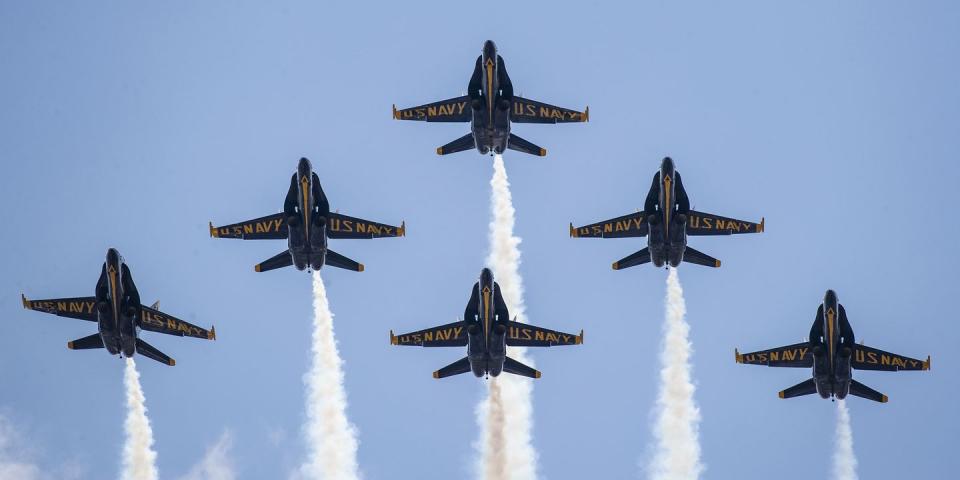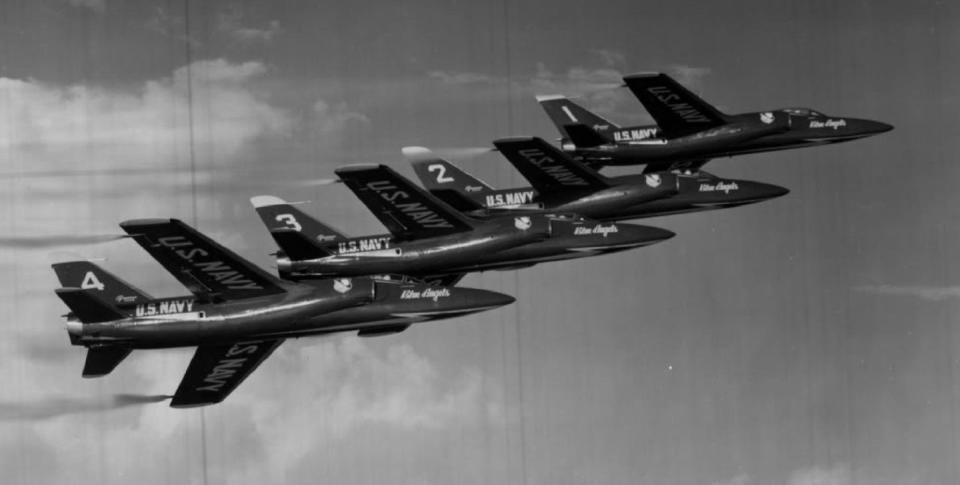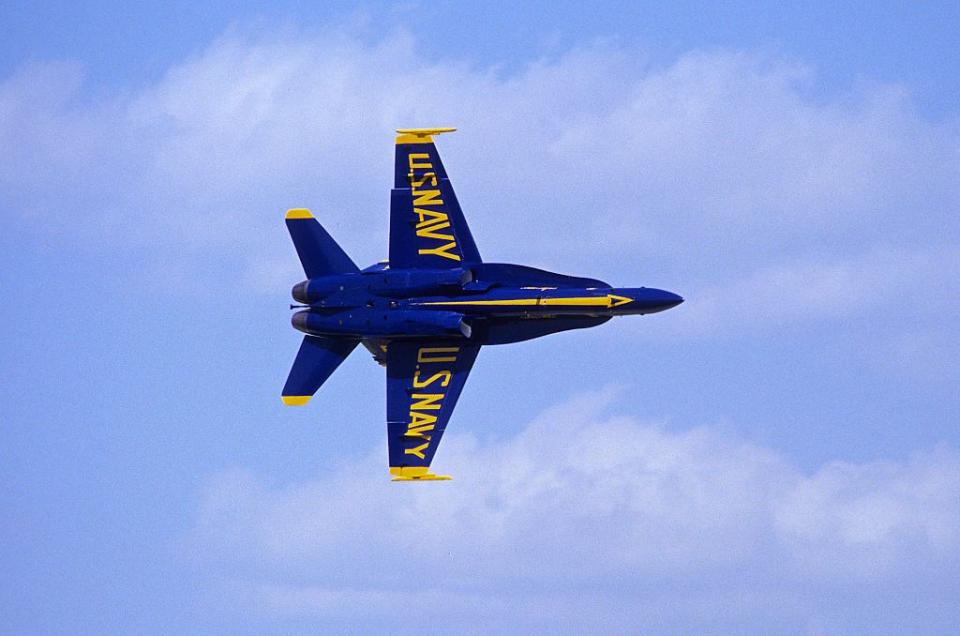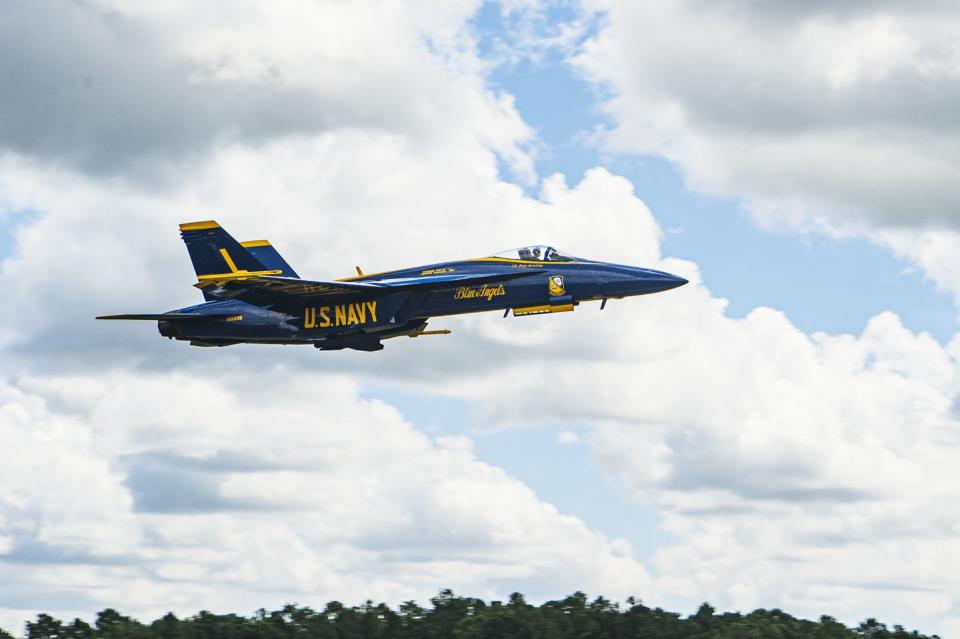The Blue Angels Are Taking Their Hornet Out for One Last Flight

The Blue Angels are taking their last F/A-18 Hornet fighter for a final flight today.
The Blues flew the F/A-18 for 34 years, the longest run of any of their airframes.
The flight team is transitioning to Super Hornet fighters, as well as a new “Fat Albert” transport.
The Blue Angels are taking their last F/A-18 Hornet fighter for one final flight today. The flight demonstration team has flown the Hornets for more than three decades, but the time has come to move on to newer airplanes. After today’s flight, the Blues will fully transition to the newer, bigger Super Hornet fighter.
✈ You love badass planes. So do we. Let's nerd out over them together.
The U.S. Navy established the Blue Angels in 1946, as the team puts it, to “raise the public's interest in naval aviation and boost Navy morale.” Every year since, the Blues have flown the air show circuit both in the U.S. and abroad, thrilling millions with their daring flying maneuvers.

The Blues have flown 10 airframes over the last 74 years, starting with the wartime F6F Hellcat fighter. The team is now on the verge of transitioning from the F/A-18C/D Hornet to the F/A-18E/F Super Hornet. The transition will mark the third generation of Hornet fighters to serve with the blues over 34 years.
The team was first equipped with the F/A-18A and F/A-18B Hornet in 1986. The bulk of the Blue Angels used the -A model, while they often used the two-seat -B model to take VIPs up for a demonstration flight. In 2010, the team transitioned to newer -C and -D models. Now, the Blues are moving to -E and -F models, with the -F providing a second seat for ride-alongs.

The Navy retired the -C/D model from active duty naval aviation, as the older planes are increasingly difficult to maintain. The Blue Angels are now taking older Super Hornets procured in the early 2000s and converting them to flight demonstration duty.
The Blues are converting 11 Super Hornets, including 9 single-seat -E models and a pair of two-seat -F models, making $90 million modifications to the plane’s flight control software and adding smoke generators. Despite the modifications, the planes can be made combat-ready in 72 hours.
🛫 Our Favorite Hobby RC Planes
The Blue Angels aren't just picking up new fighter jets. The Blues have also received a new “Fat Albert”, the nickname of the cargo transport plane that accompanies the team from location to location, carrying spare parts, maintainers, and other personnel.
The Blues purchased the plane, an ex-Royal Air Force C-130J Super Hercules, from the U.K. and painted it in their blue and gold livery. Fat Albert is the unsung star of the team’s air show act, kicking it off with a low-altitude overflight and some fancy maneuvers of its own.

The final Hornet flight will take place this afternoon from 4 p.m. to 4:30 p.m. CST, over and in the vicinity of Naval Air Station Pensacola, the Blue Angels’ home base.
The team kicks off its 2021 flight show season April 10 at the Naval Air Station Jacksonville Show at Pensacola, Florida. To see if the Blues are coming to your town, see their schedule here.
You Might Also Like
